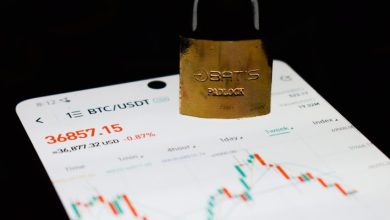Myth: The Supply of Cryptocurrencies Is Unlimited

- Debunking the myth of unlimited cryptocurrency supply
- Exploring the truth behind the supply of cryptocurrencies
- Understanding the finite nature of cryptocurrency issuance
- The misconception of endless cryptocurrency creation
- Setting the record straight on cryptocurrency supply limits
- Dispelling the belief that cryptocurrencies can be infinitely generated
Debunking the myth of unlimited cryptocurrency supply
One common misconception about cryptocurrencies is that their supply is unlimited. However, this belief is not accurate. In fact, many cryptocurrencies have a fixed supply cap, meaning that there is a maximum number of coins that can ever be created.
For example, Bitcoin, the most well-known cryptocurrency, has a total supply cap of 21 million coins. This means that once all 21 million Bitcoins have been mined, no more coins will ever be created. This scarcity is one of the factors that contribute to Bitcoin’s value.
Other cryptocurrencies, such as Ethereum, also have a fixed supply cap. Ethereum’s total supply is determined by its creators and cannot be changed. This ensures that the value of Ethereum remains stable and not subject to inflation caused by an unlimited supply.
Overall, the idea that the supply of cryptocurrencies is unlimited is a myth. Many cryptocurrencies have a fixed supply cap, which helps to maintain their value and prevent inflation. Understanding this fact is crucial for anyone looking to invest in or use cryptocurrencies.
Exploring the truth behind the supply of cryptocurrencies
When it comes to the supply of cryptocurrencies, there is a common misconception that it is unlimited. However, this is far from the truth. In fact, the supply of most cryptocurrencies is capped at a certain number of coins that can ever be created. This limit is usually set by the cryptocurrency’s protocol and cannot be changed without widespread agreement from the community.
For example, Bitcoin, the first and most well-known cryptocurrency, has a maximum supply of 21 million coins. This means that once all 21 million coins have been mined, no more coins will ever be created. This scarcity is one of the key factors driving the value of Bitcoin and other cryptocurrencies.
While some cryptocurrencies may have a higher total supply than others, it is important to understand that this does not mean their supply is unlimited. In most cases, the total supply is still capped at a specific number of coins, which helps to maintain the scarcity and value of the cryptocurrency.
Understanding the finite nature of cryptocurrency issuance
It is crucial to understand the finite nature of cryptocurrency issuance to debunk the myth that the supply of cryptocurrencies is unlimited. Unlike traditional fiat currencies that can be printed endlessly by central banks, most cryptocurrencies have a predetermined maximum supply cap. This means that there is a fixed limit to the number of coins that can ever be created.
For example, Bitcoin, the first and most well-known cryptocurrency, has a maximum supply of 21 million coins. This scarcity is built into the code of the cryptocurrency and is designed to prevent inflation and ensure the value of the digital asset over time. Similarly, other cryptocurrencies like Litecoin, Ethereum, and Ripple also have finite supplies to maintain their value.
Understanding this finite nature of cryptocurrency issuance is essential for investors and traders to grasp the economic principles that govern these digital assets. It creates a sense of scarcity and rarity that can drive up demand and, ultimately, the price of the cryptocurrency. As more people realize the limited supply of a particular cryptocurrency, they may be more inclined to invest in it for potential long-term gains.
The misconception of endless cryptocurrency creation
One common misconception about cryptocurrencies is the belief that there is an unlimited supply of them that can be created. This misconception stems from a misunderstanding of how cryptocurrencies are actually generated. While it is true that many cryptocurrencies have a decentralized nature, with no central authority controlling their creation, this does not mean that new cryptocurrencies can be created endlessly.
In fact, most cryptocurrencies have a predetermined supply cap that dictates the maximum number of coins that can ever be created. For example, Bitcoin, the most well-known cryptocurrency, has a maximum supply cap of 21 million coins. Once this cap is reached, no new bitcoins will be created. This limited supply is actually one of the key factors that gives cryptocurrencies their value, as it helps to prevent inflation and maintain scarcity.
Additionally, the process of creating new cryptocurrencies, known as mining, becomes increasingly difficult over time. This is due to the complex mathematical algorithms that must be solved in order to generate new coins. As more coins are mined, the algorithms become more challenging, making it harder to create new coins. This helps to further limit the supply of cryptocurrencies and prevent them from being created endlessly.
Setting the record straight on cryptocurrency supply limits
It is a common misconception that the supply of cryptocurrencies is unlimited, but this is simply not the case. In fact, many cryptocurrencies have a predetermined supply limit built into their code, which means that there will only ever be a certain number of coins in circulation.
For example, Bitcoin, the most well-known cryptocurrency, has a maximum supply of 21 million coins. This means that once all 21 million coins have been mined, no more Bitcoin will ever be created. This limited supply is one of the reasons why Bitcoin is often referred to as “digital gold” – just like gold, there is only a finite amount available.
Other cryptocurrencies, such as Ethereum, also have a capped supply. Ethereum’s current supply is around 118 million coins, but there are plans to switch to a new system that will limit the supply even further.
It is important to understand the supply limits of cryptocurrencies when considering investing in them. Unlike fiat currencies, which can be printed endlessly by central banks, cryptocurrencies have a fixed supply that cannot be manipulated by any single entity. This scarcity is what gives cryptocurrencies their unique value proposition and makes them an attractive investment for many people.
Dispelling the belief that cryptocurrencies can be infinitely generated
One of the common misconceptions about cryptocurrencies is the belief that they can be endlessly created out of thin air. This myth stems from a misunderstanding of how cryptocurrencies actually work. In reality, most cryptocurrencies have a finite supply, meaning that there is a set limit to the number of coins that can ever be created.
For example, Bitcoin, the first and most well-known cryptocurrency, has a maximum supply of 21 million coins. This limit is hardcoded into the Bitcoin protocol and cannot be changed without overwhelming consensus from the network. Once all 21 million coins have been mined, no more Bitcoins can ever be created.
Other cryptocurrencies, such as Litecoin and Ethereum, also have predetermined maximum supplies. This scarcity is what gives cryptocurrencies their value – the limited supply creates a sense of scarcity, similar to precious metals like gold.
While it is true that new cryptocurrencies can be created, they must adhere to the rules set forth in their respective protocols. This means that the supply of these new coins is also limited, ensuring that they cannot be infinitely generated.



